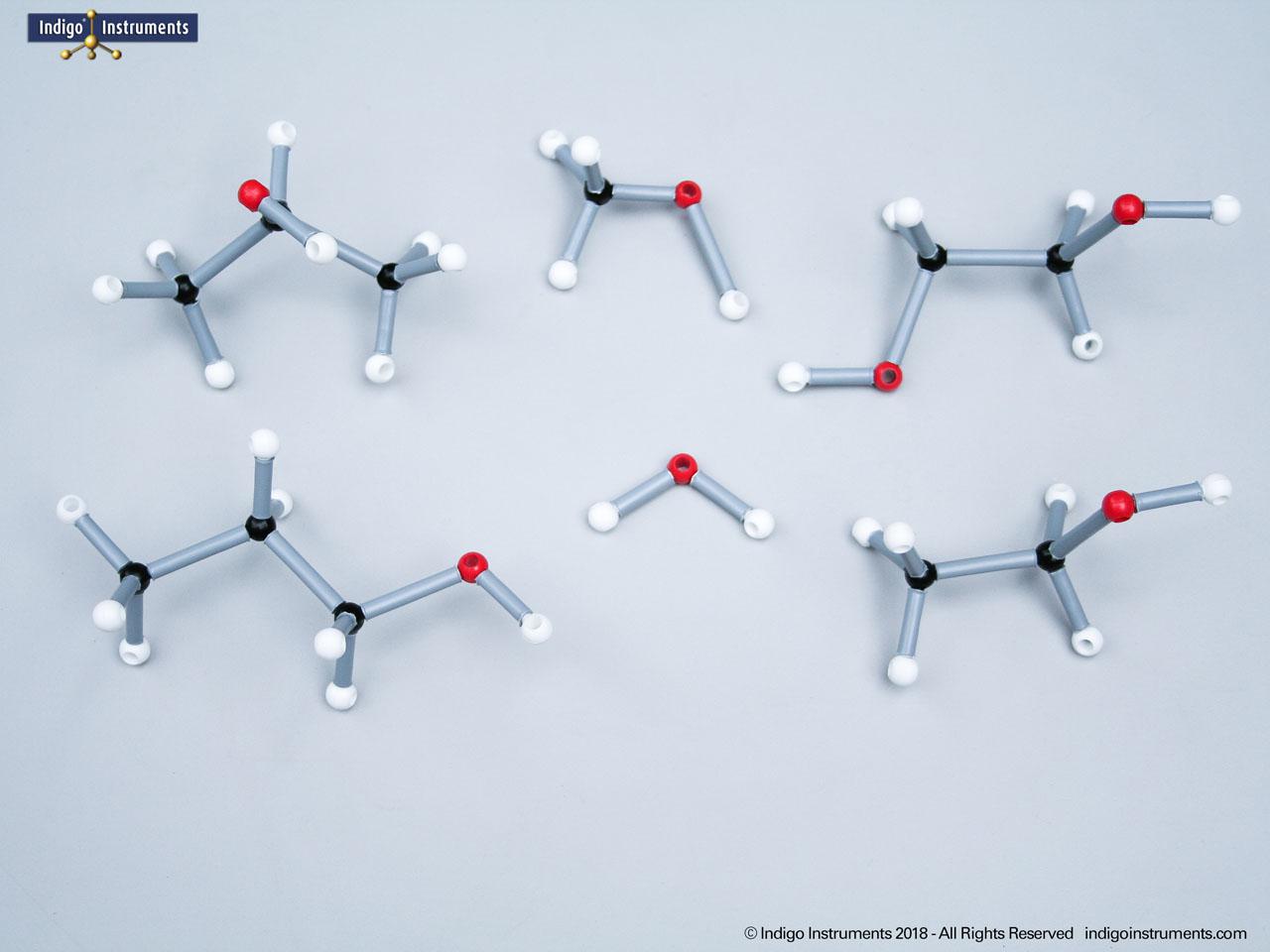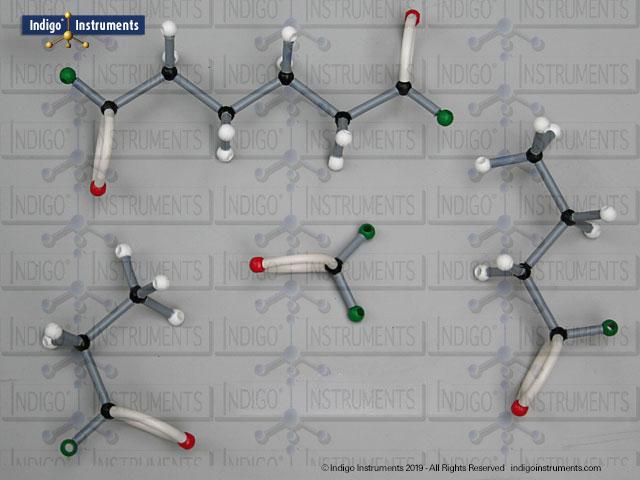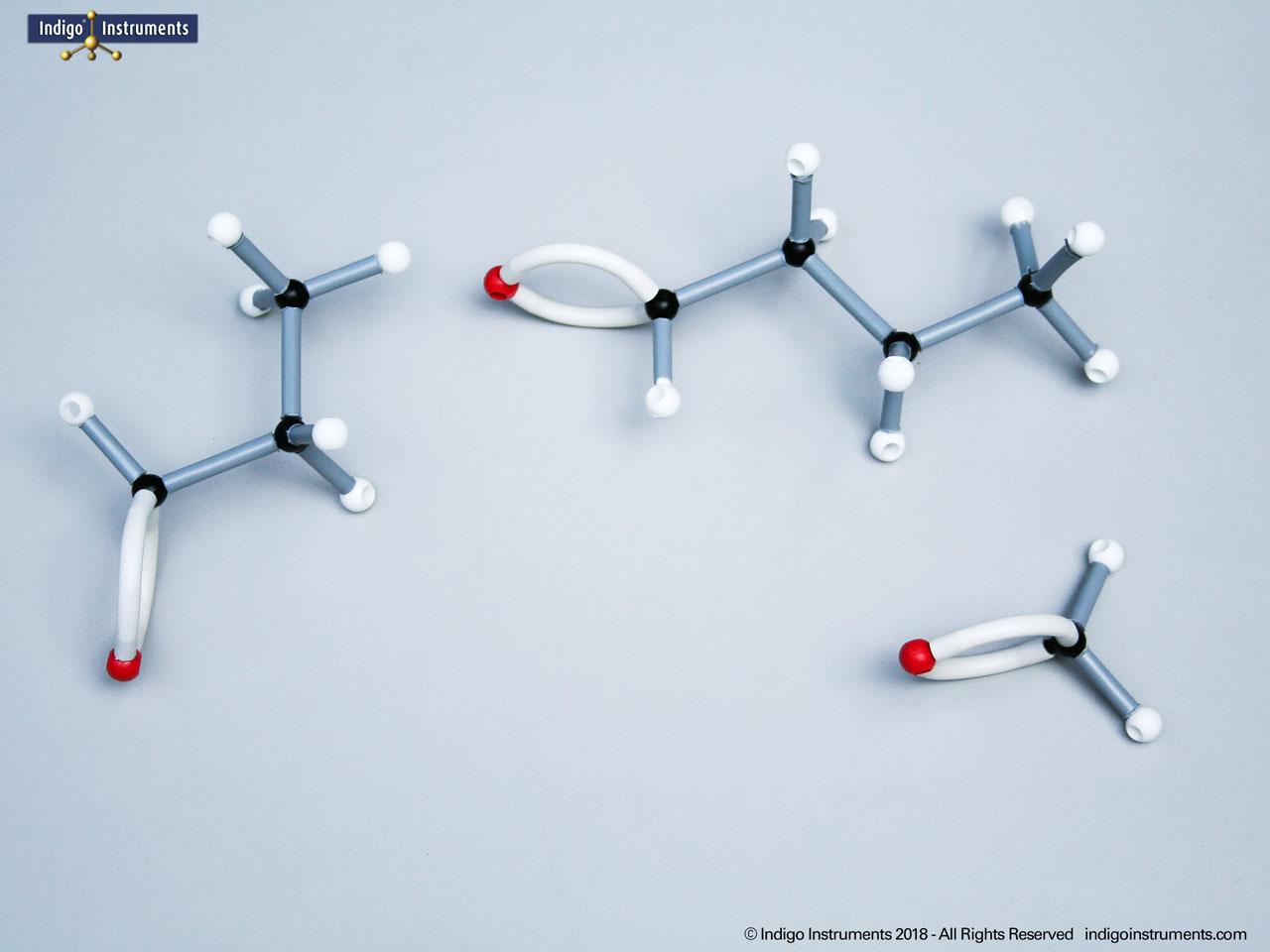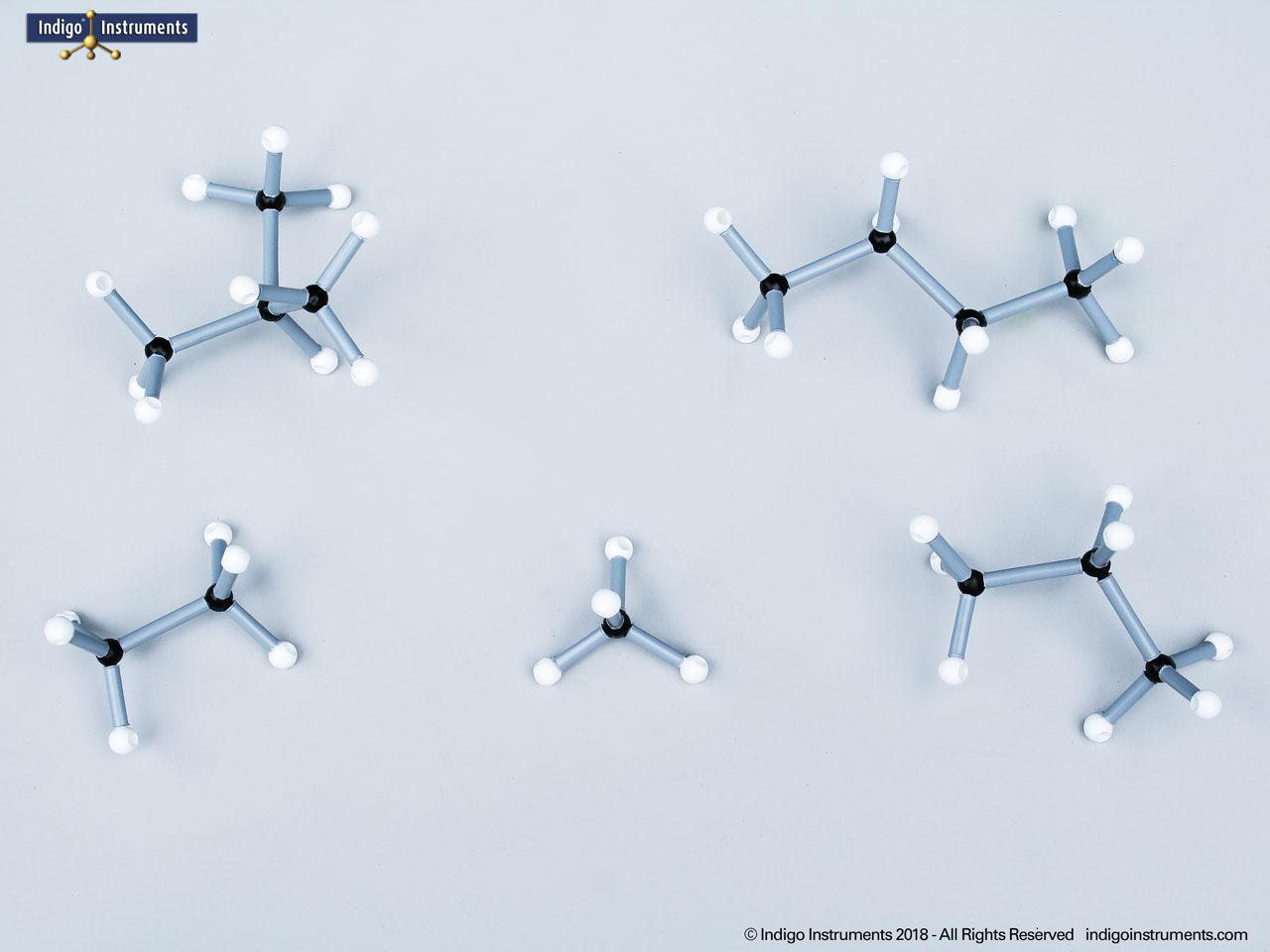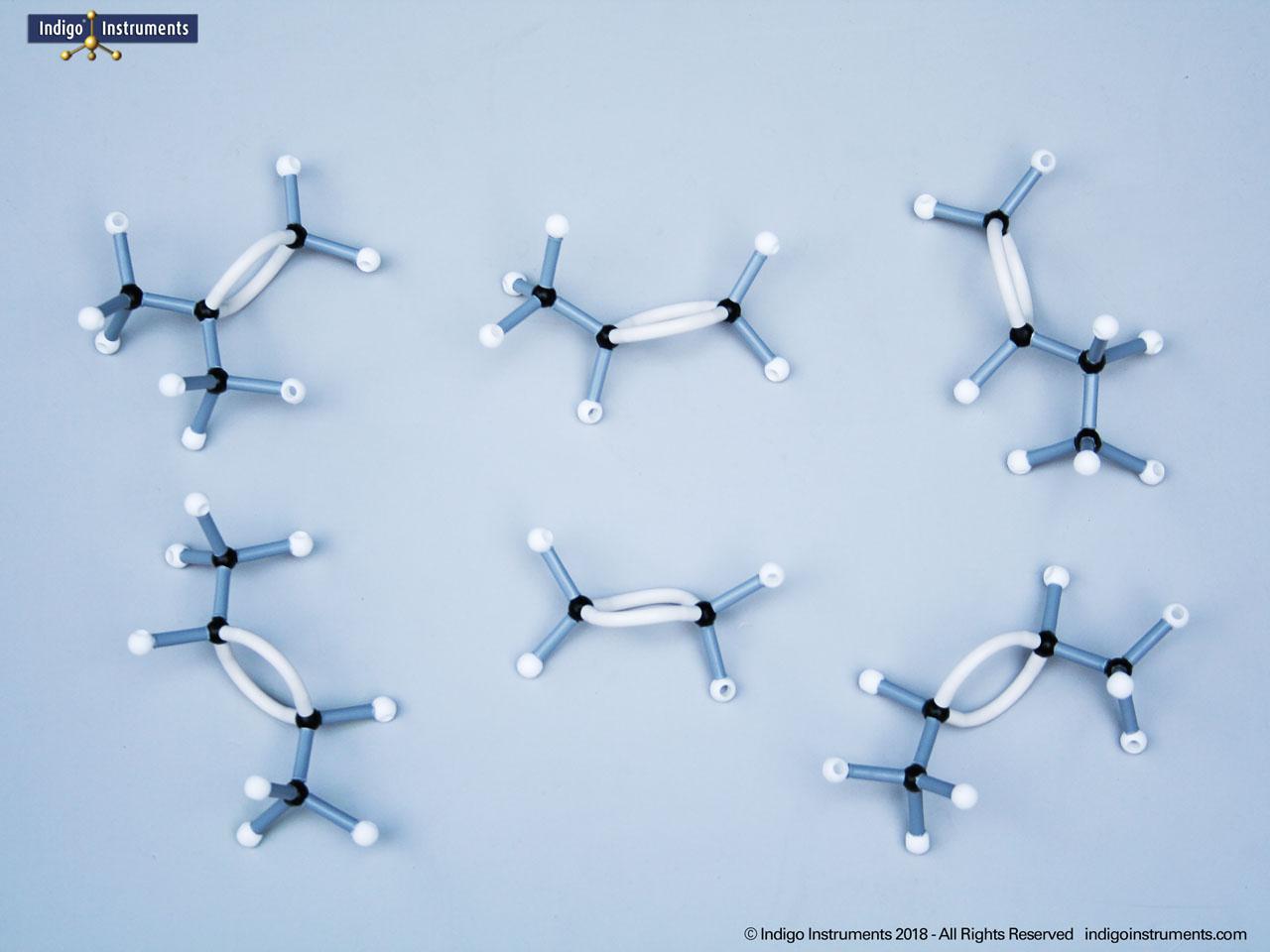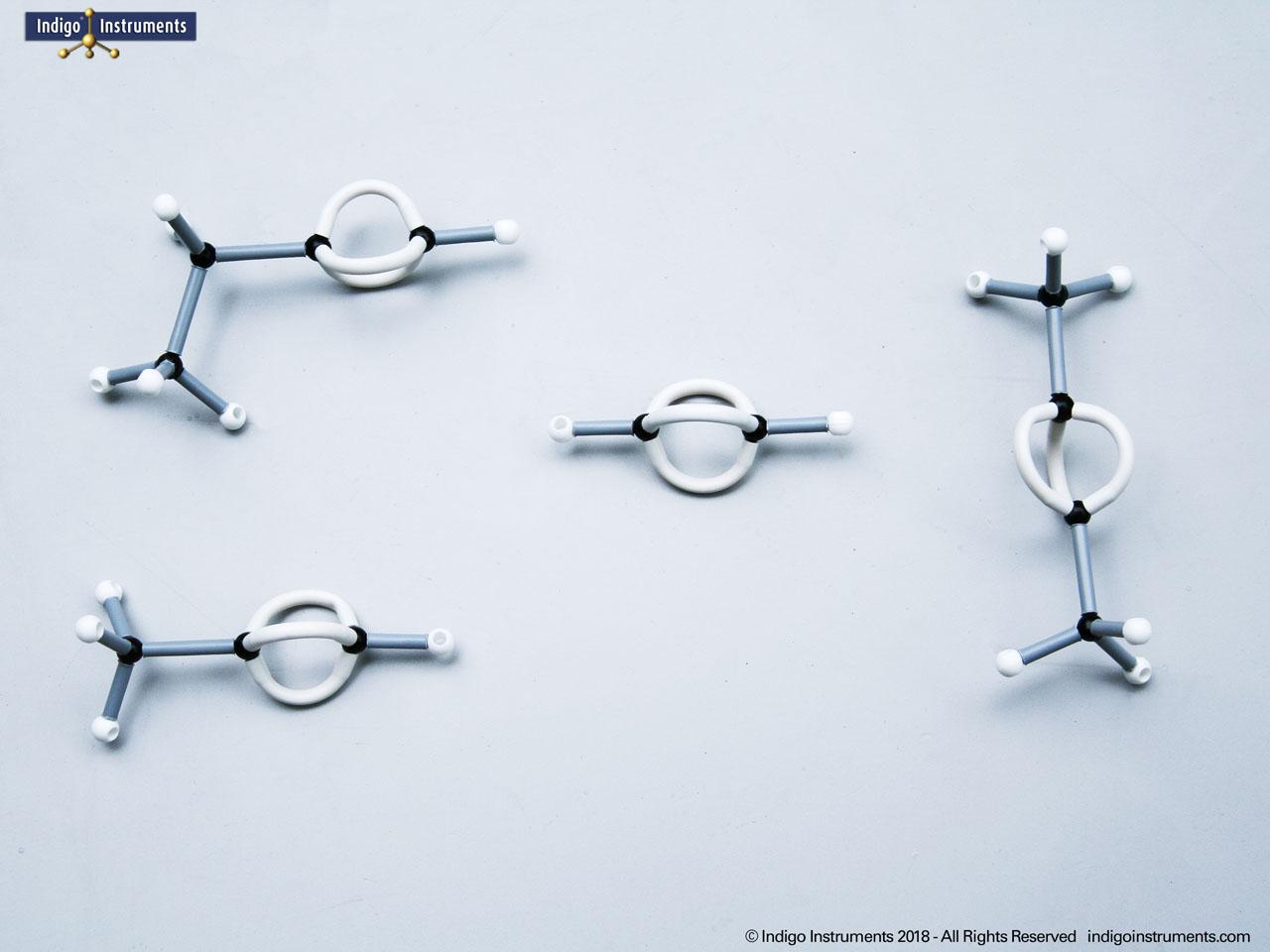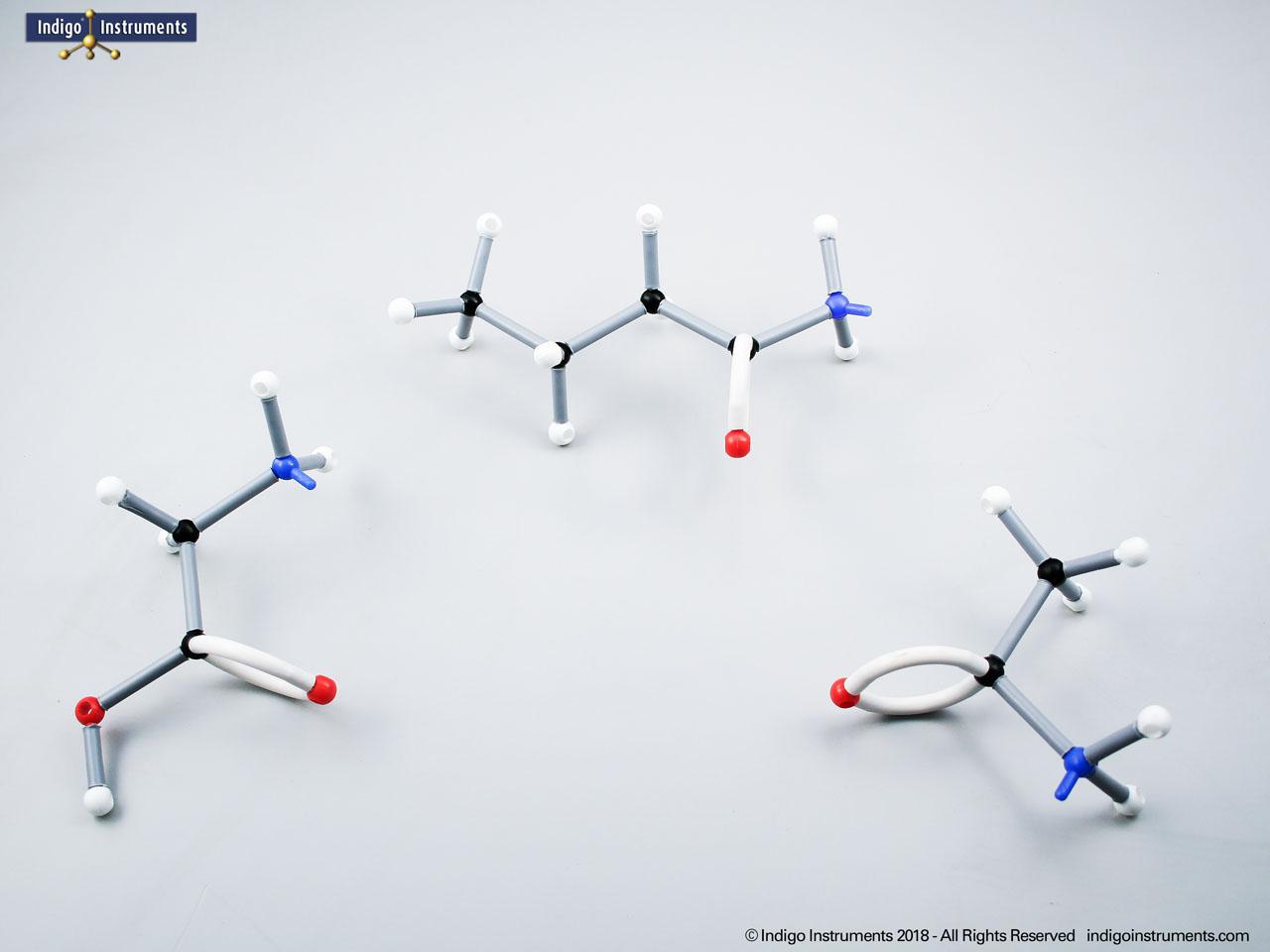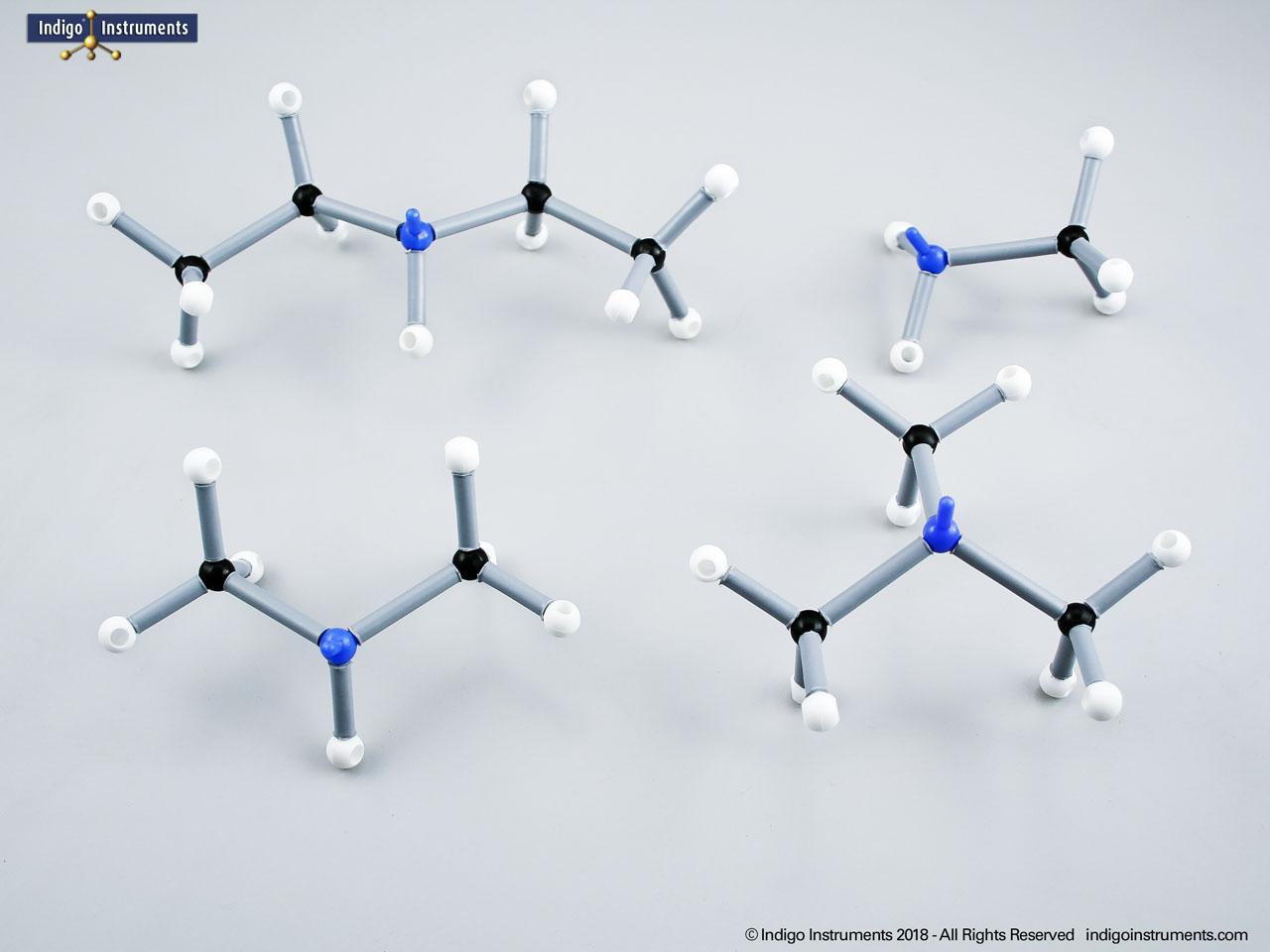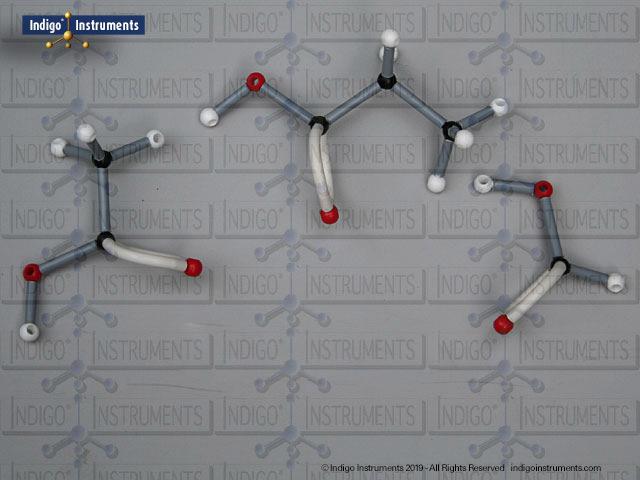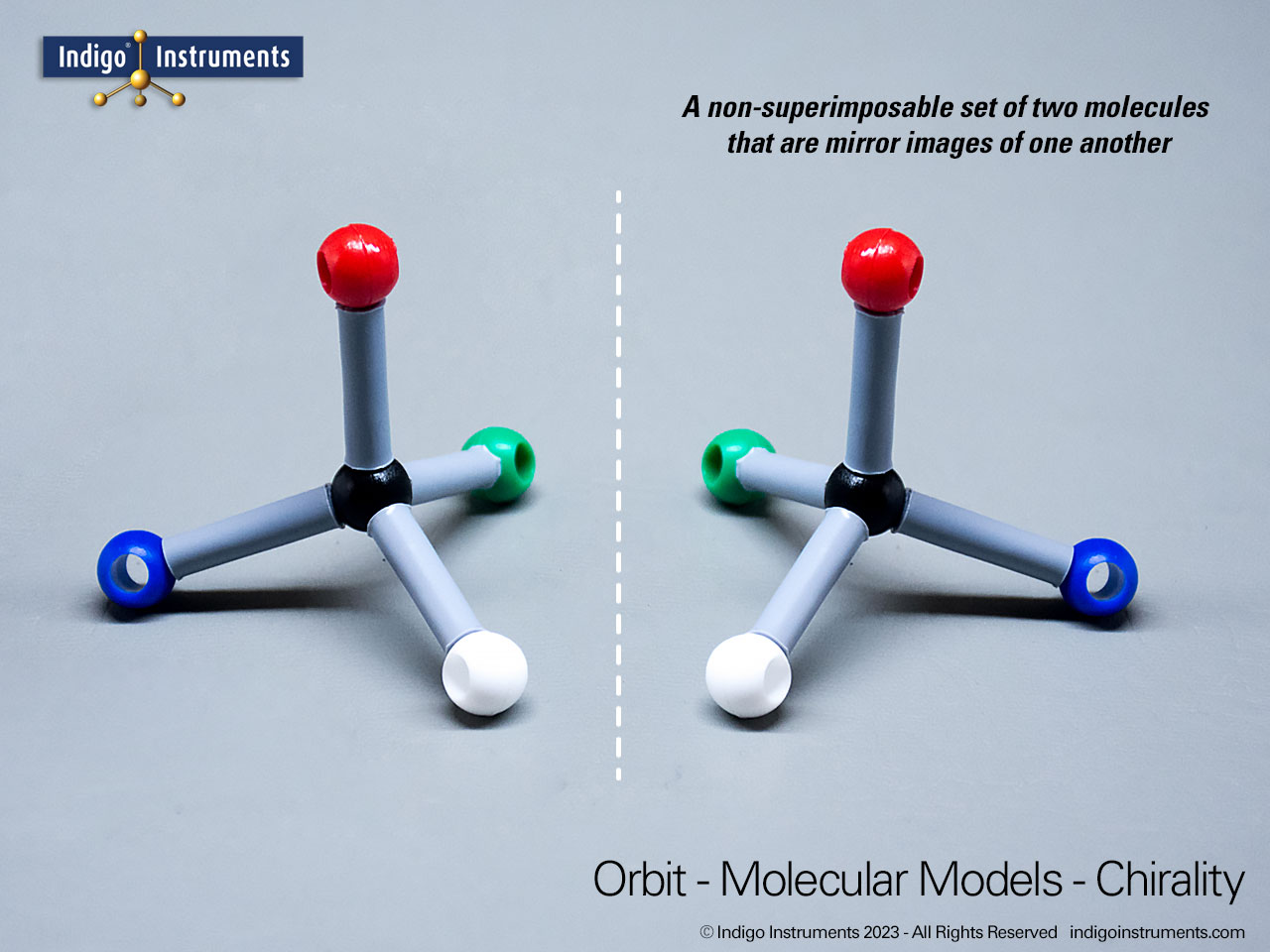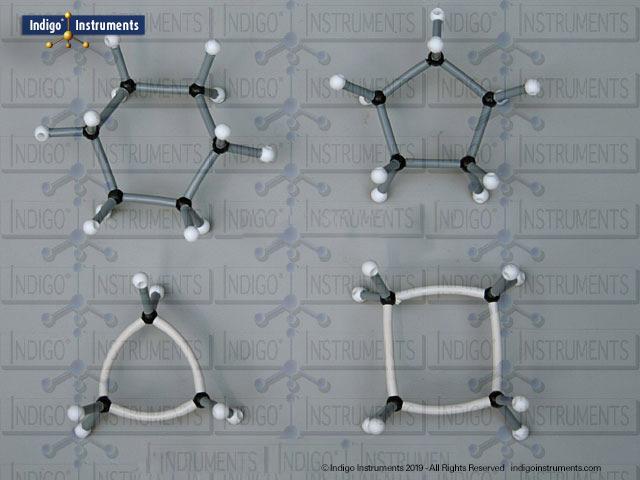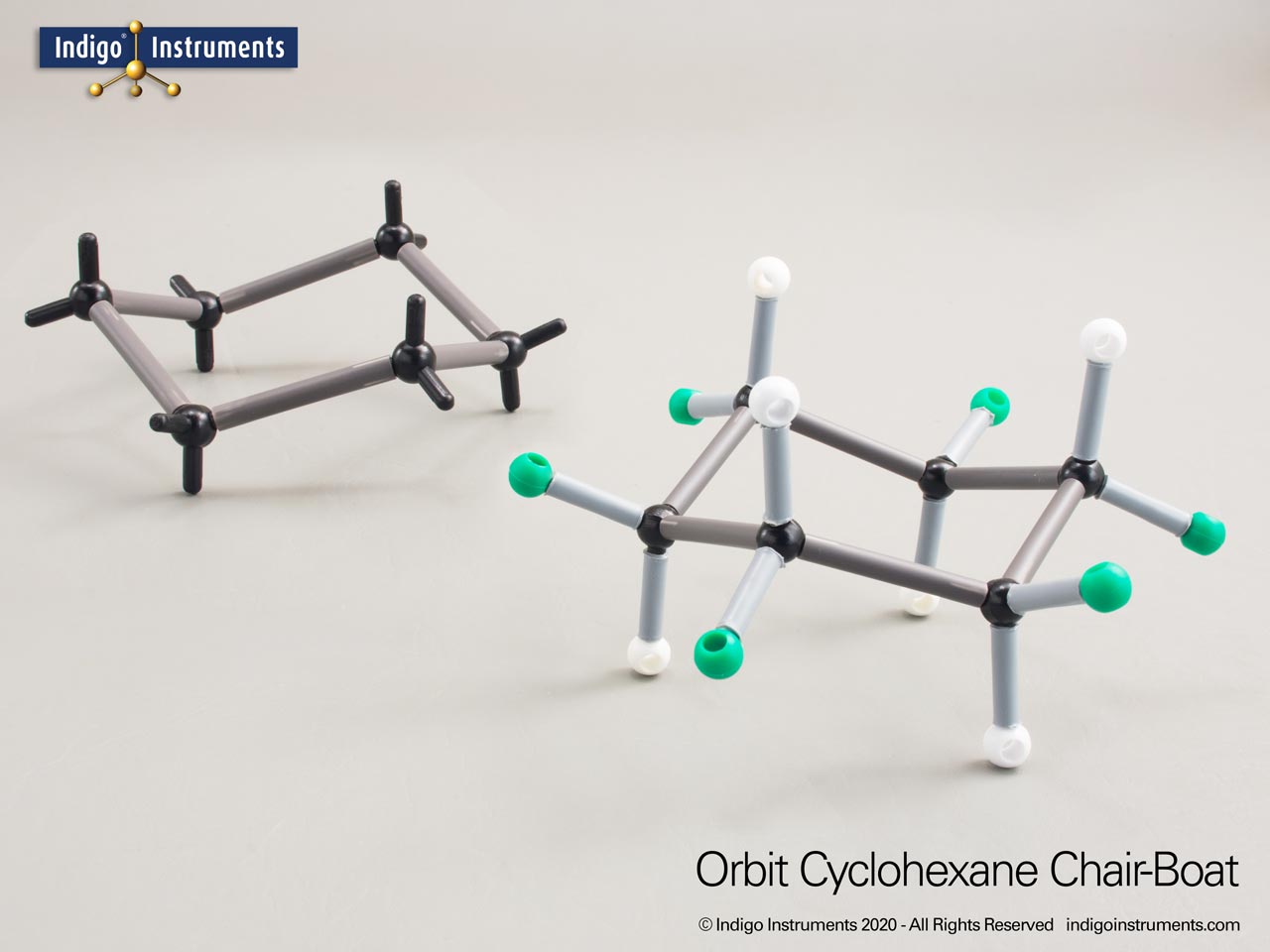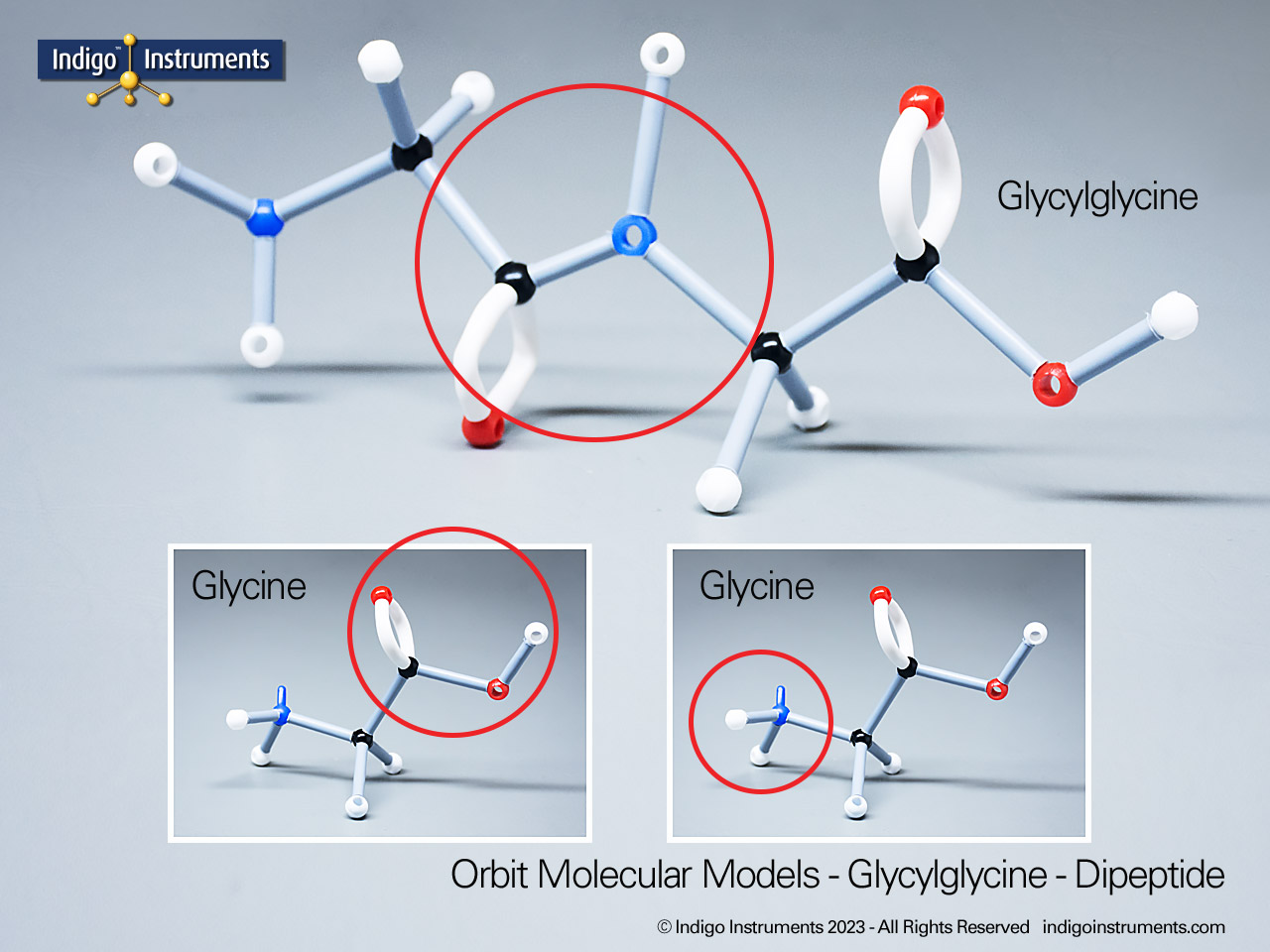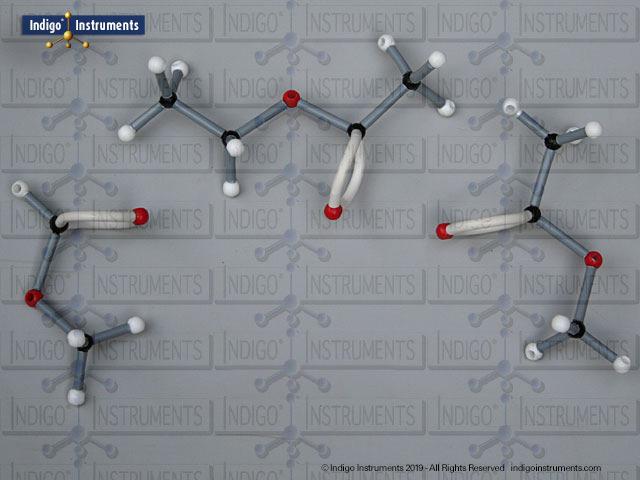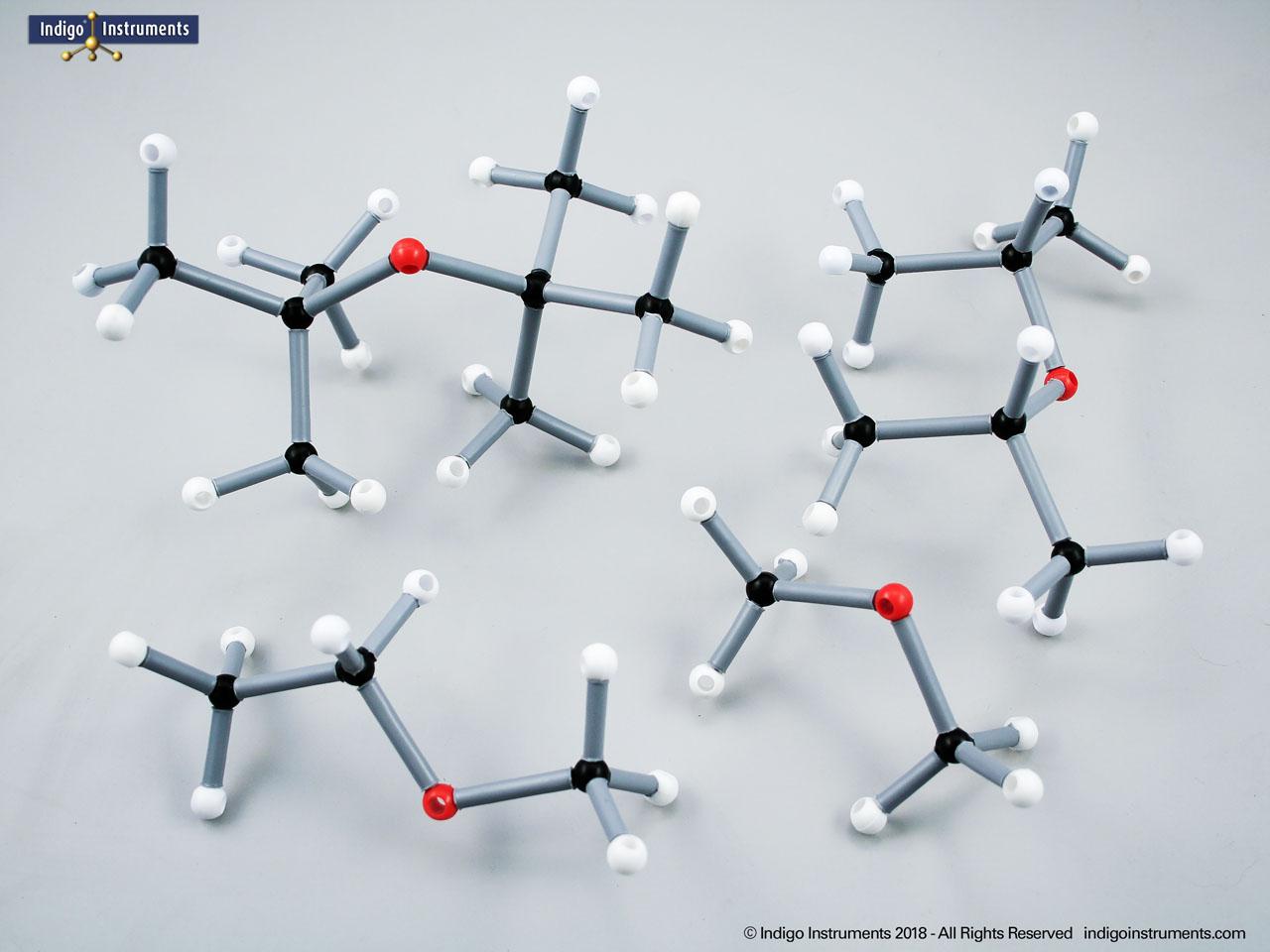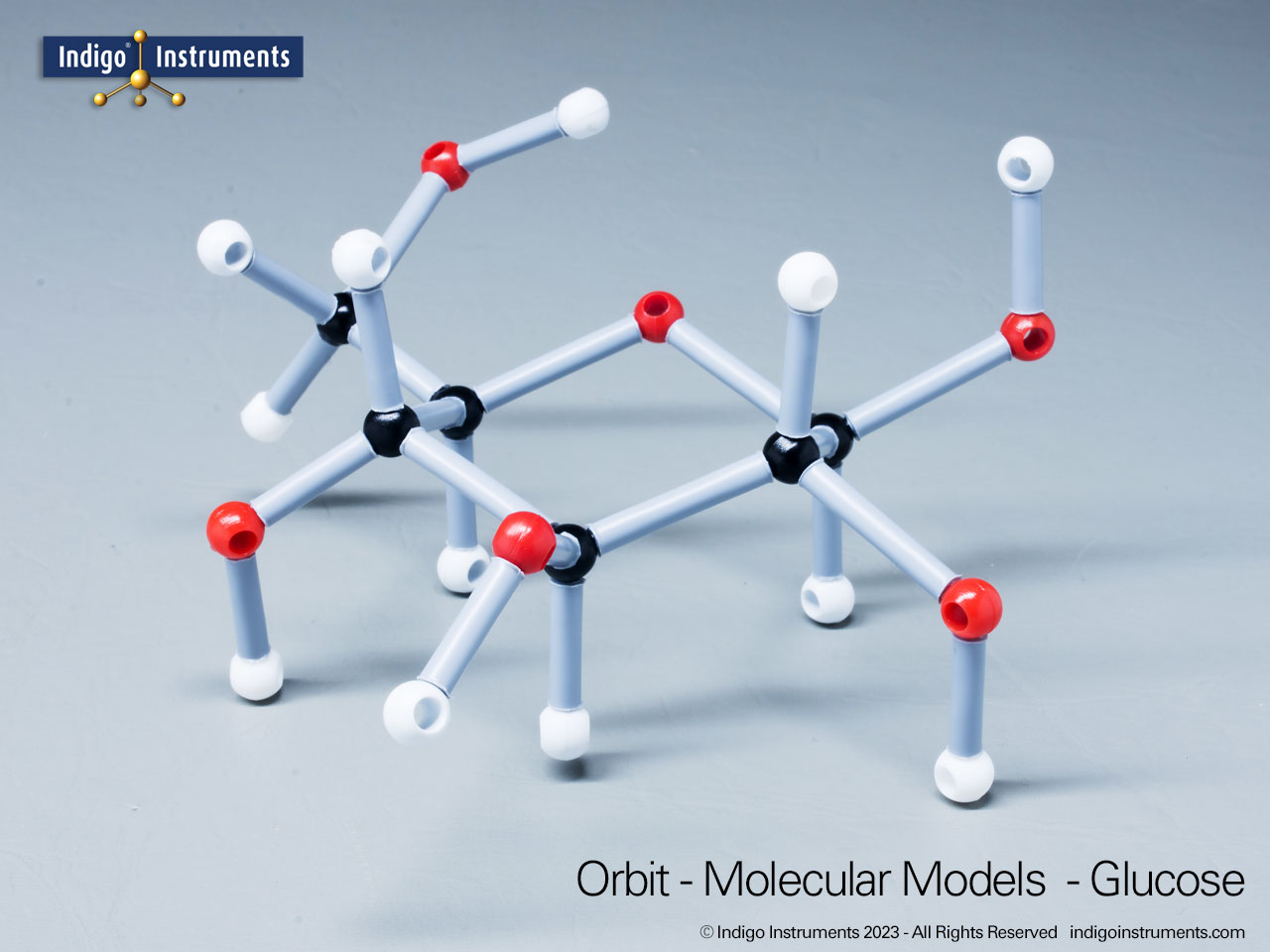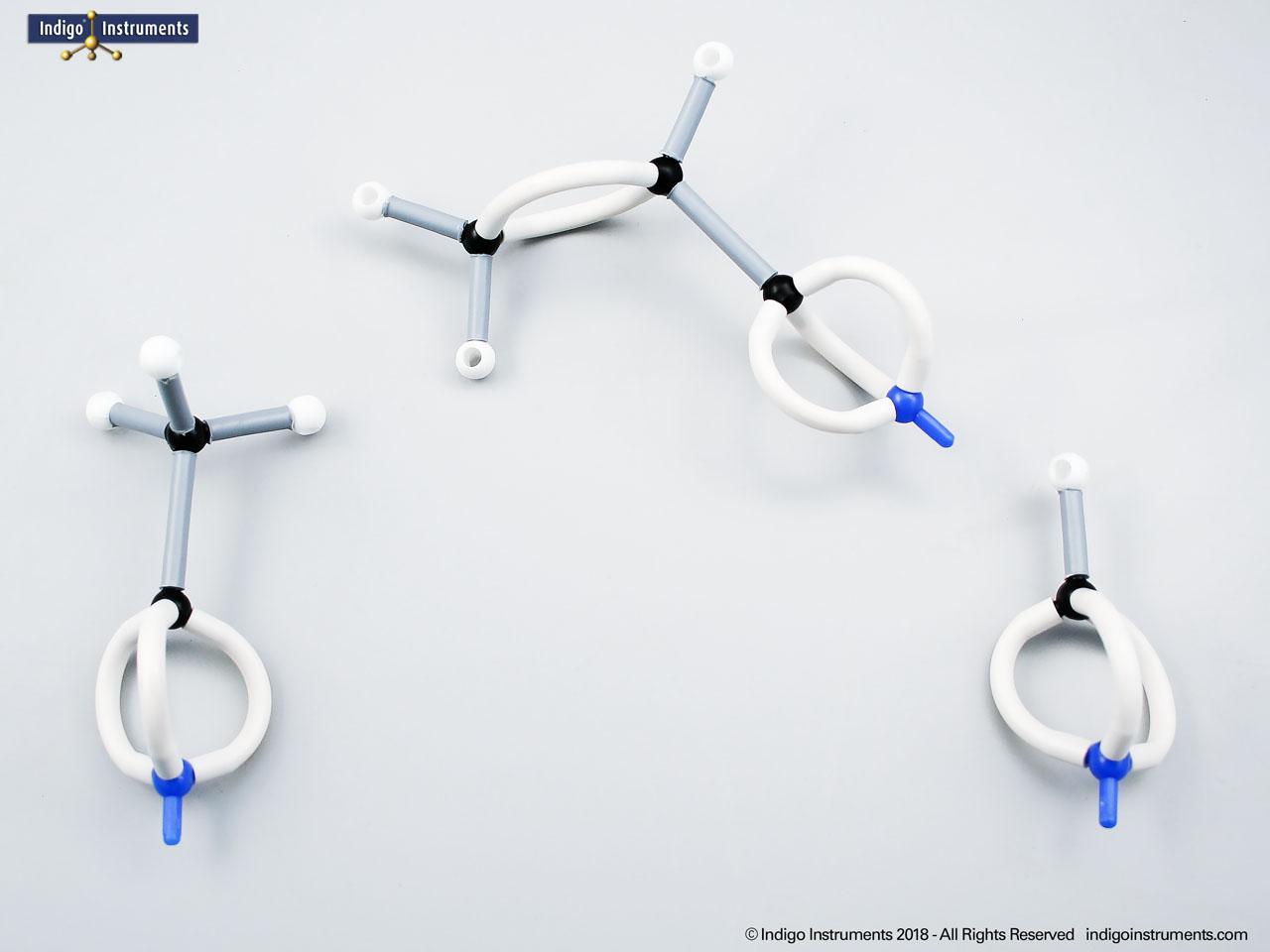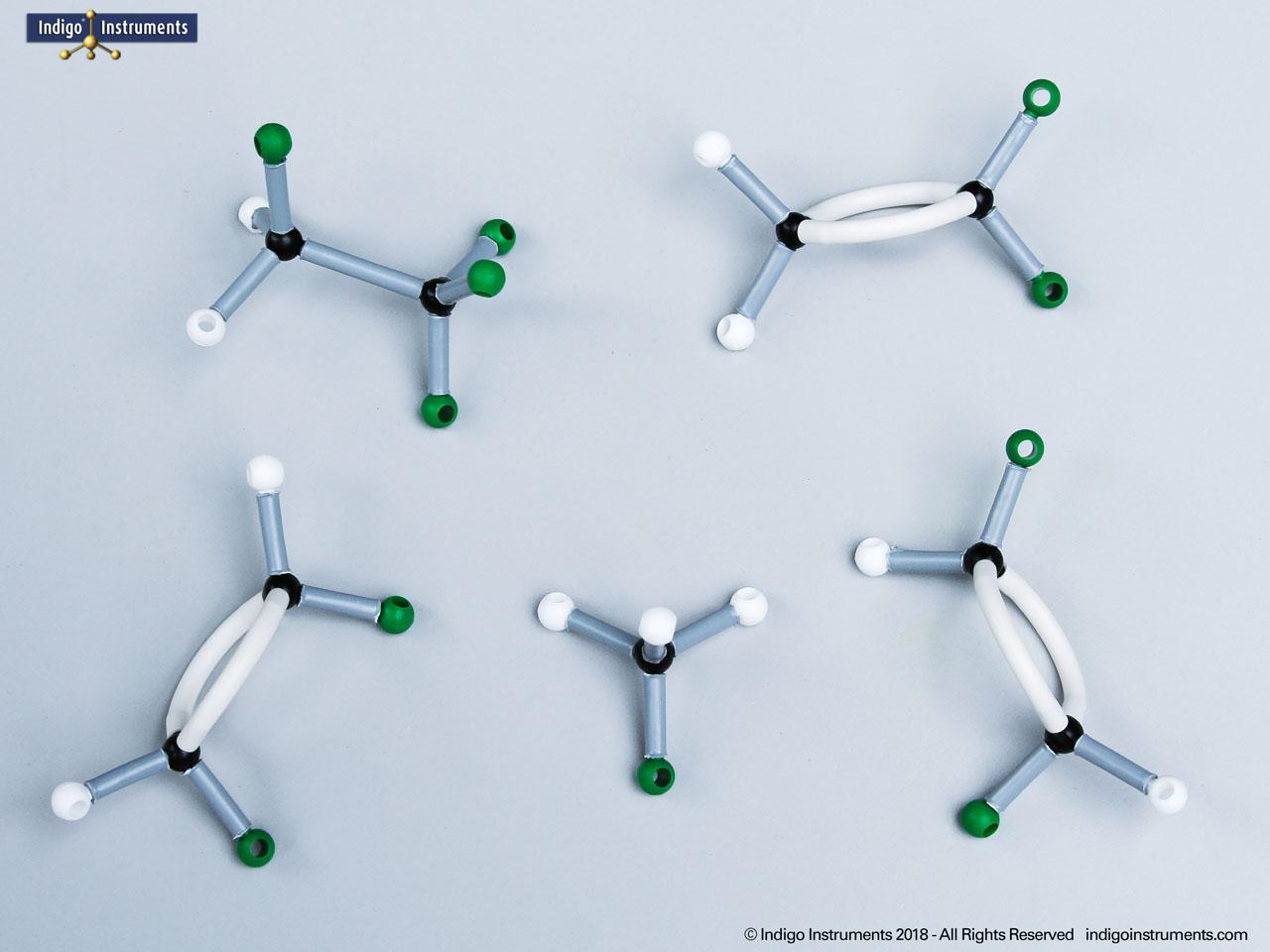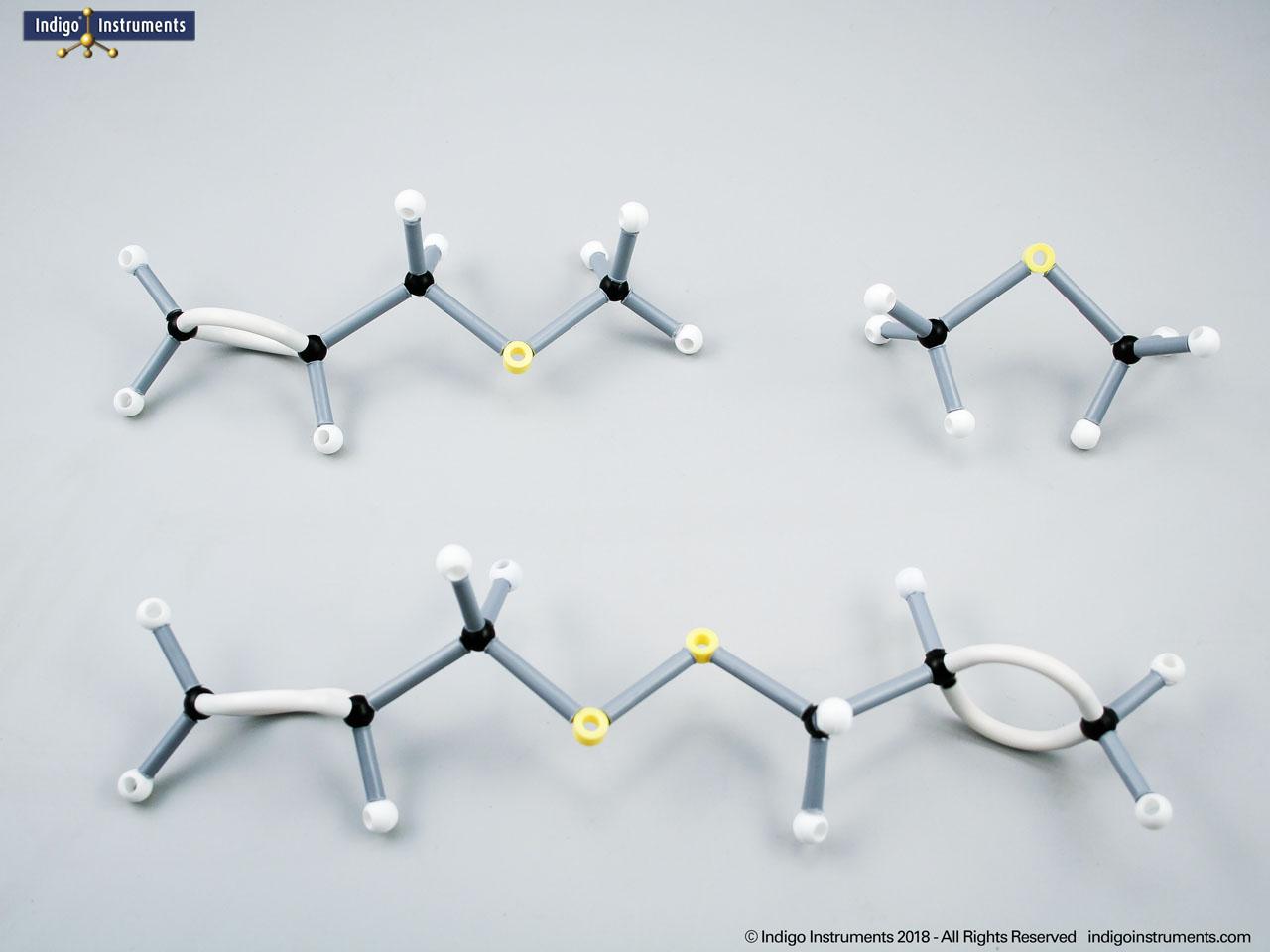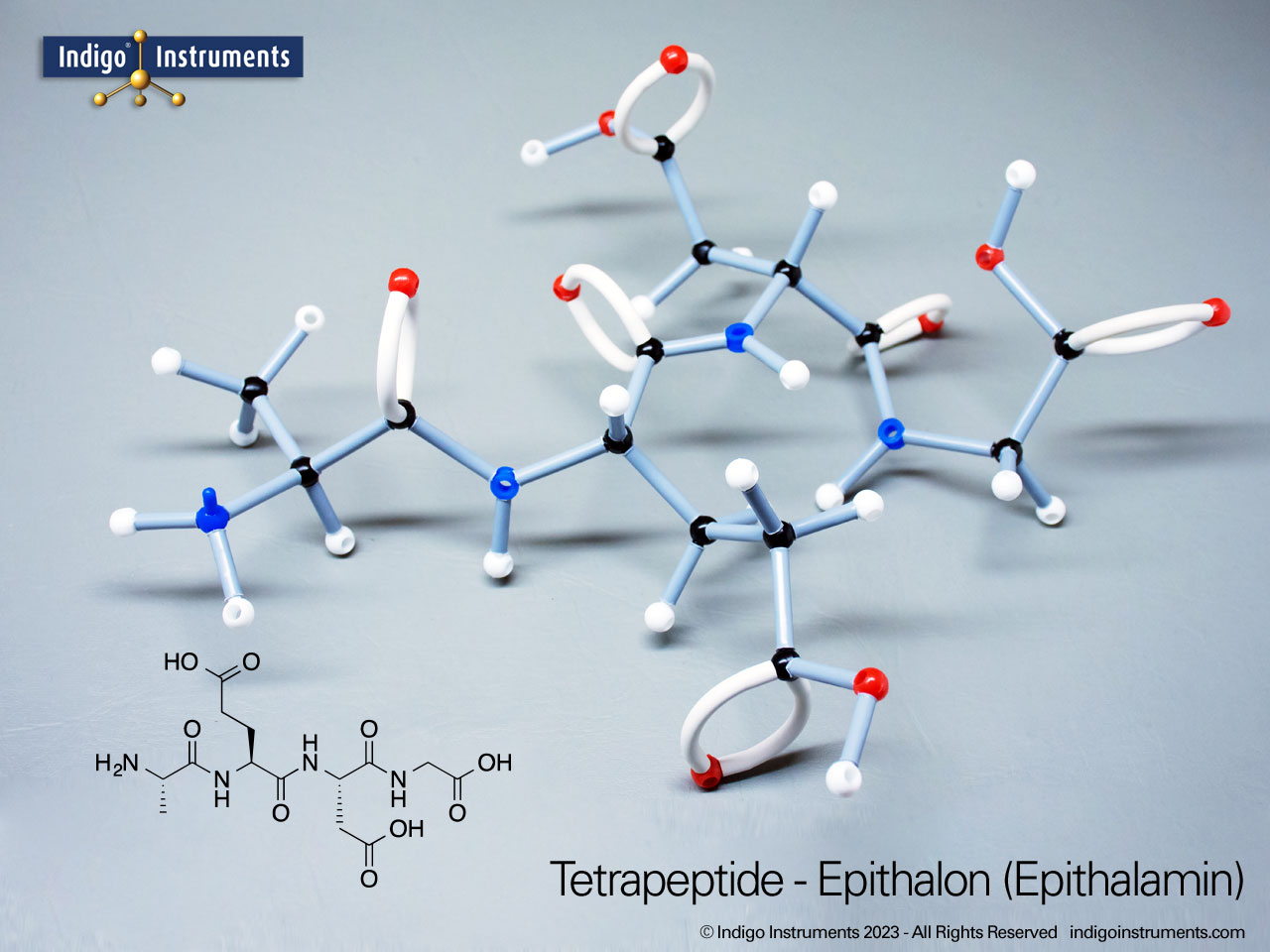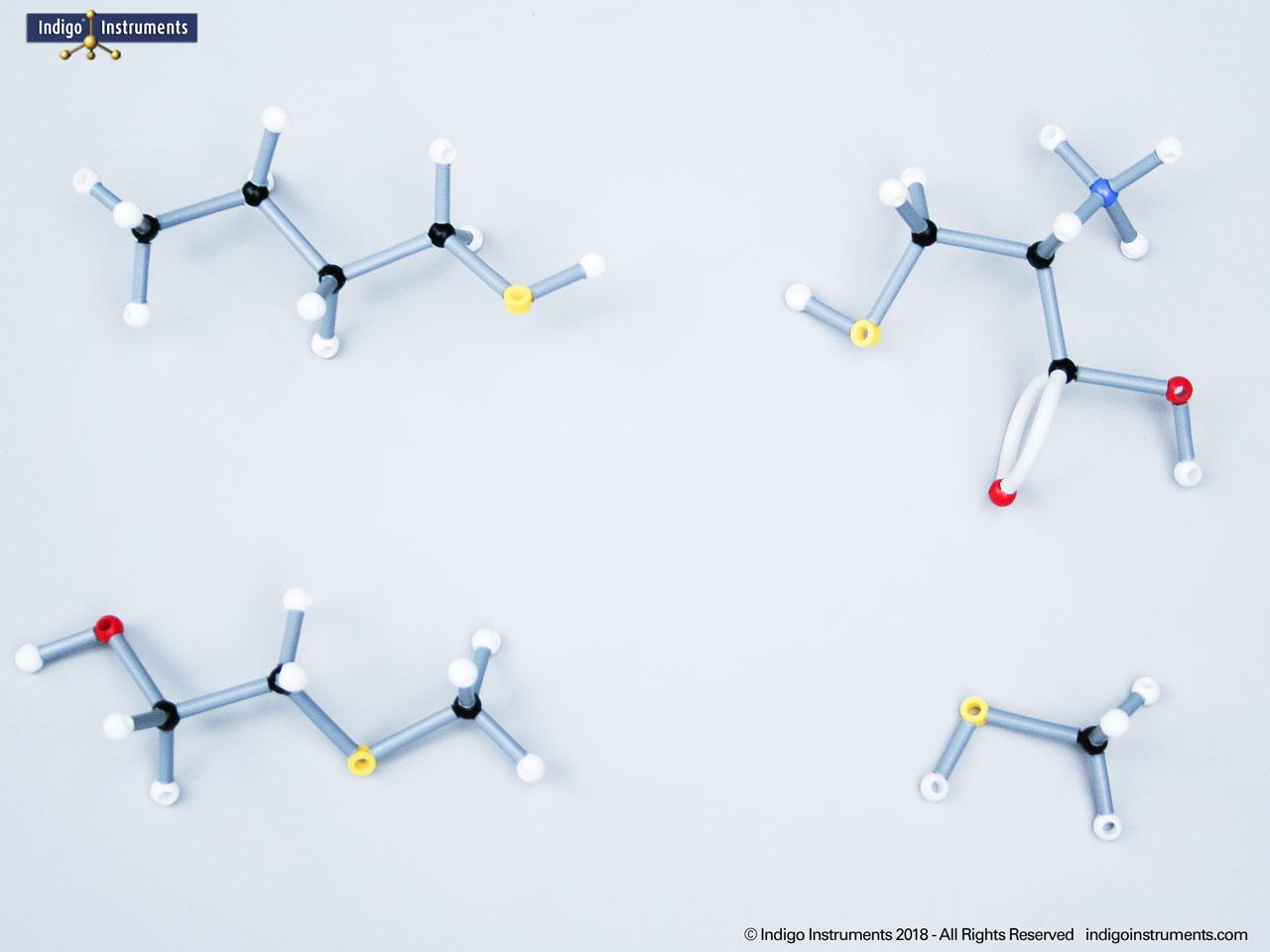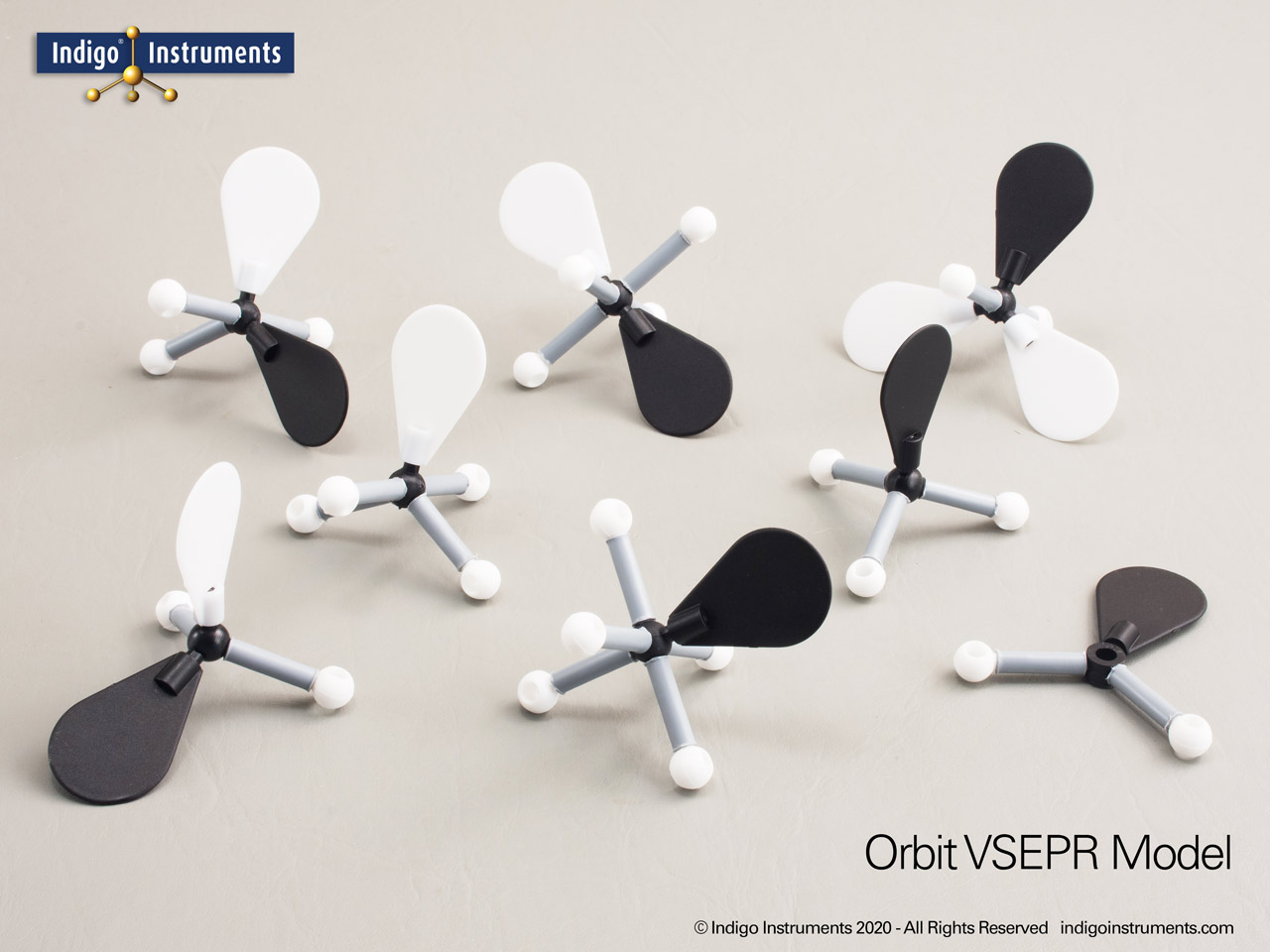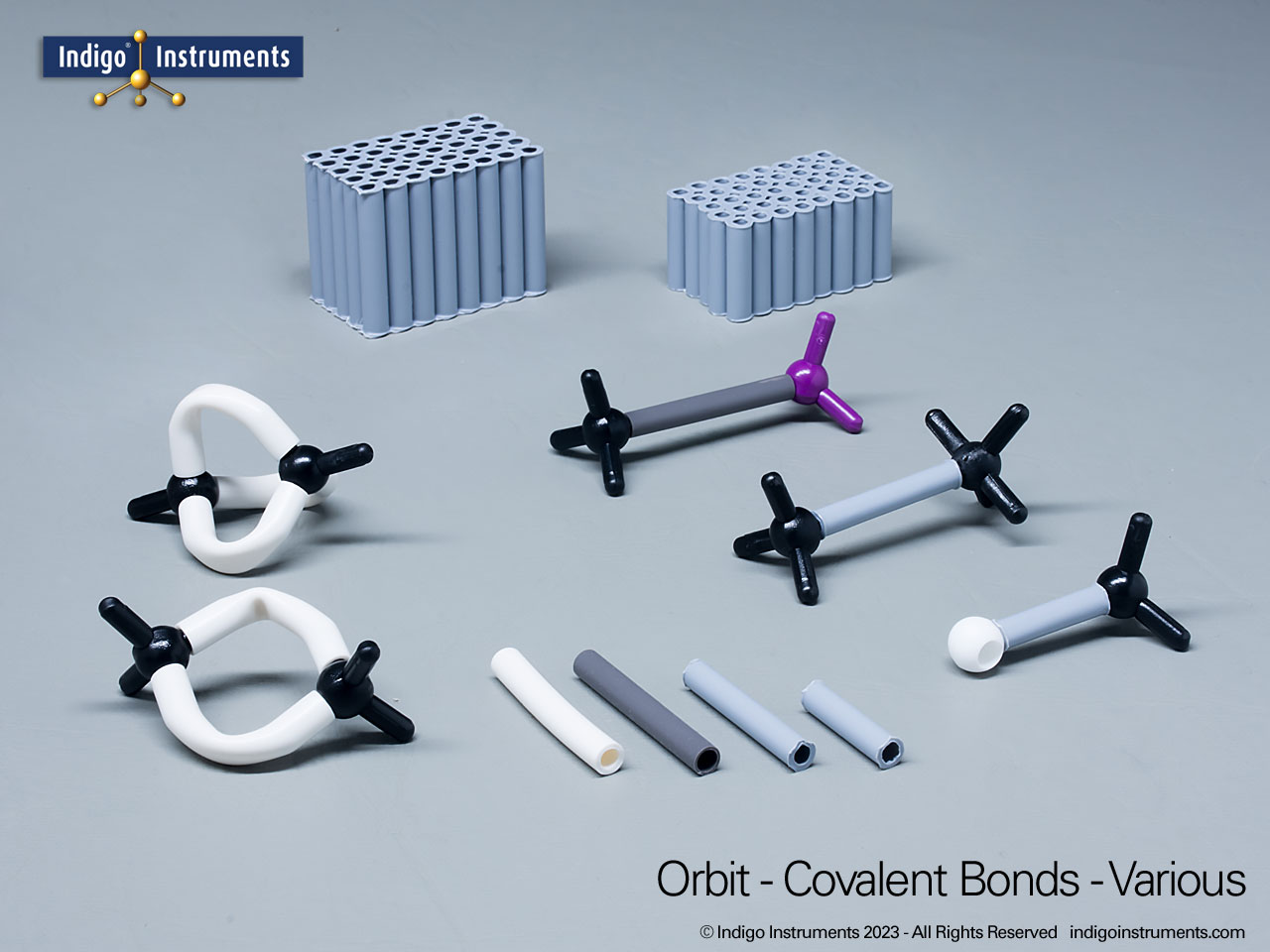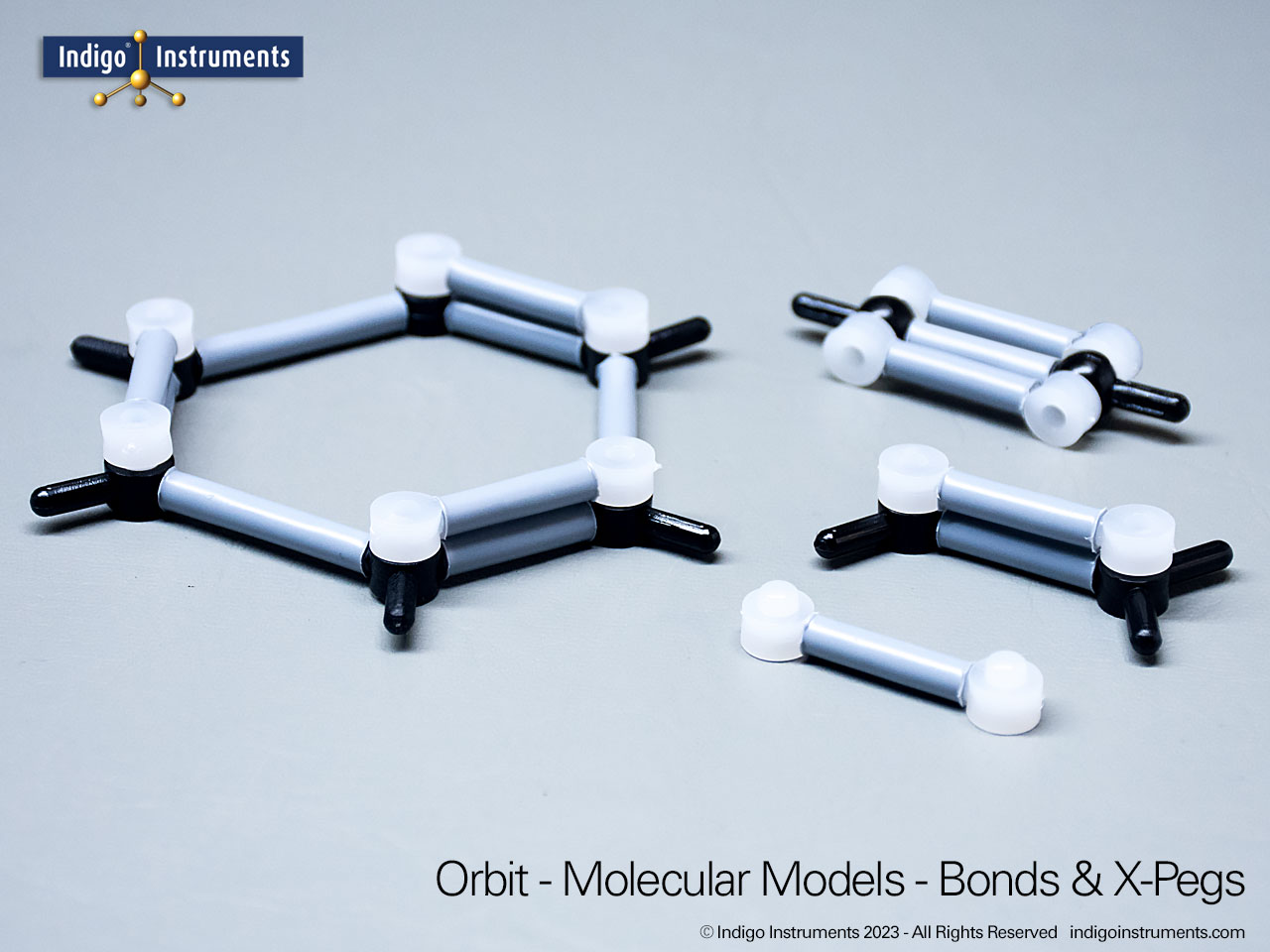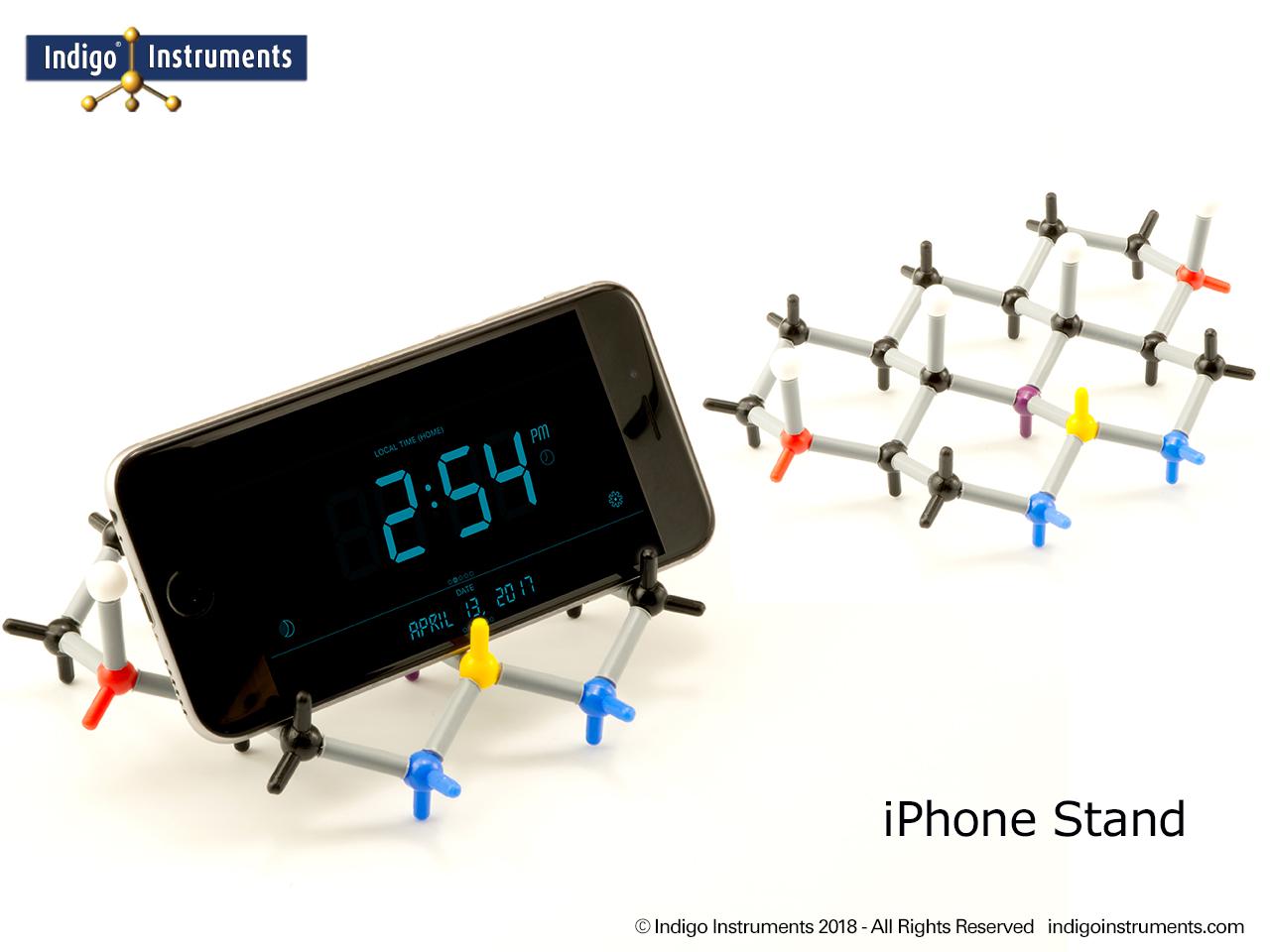General & Organic Chemistry Molecular Models
SKU: 68845NV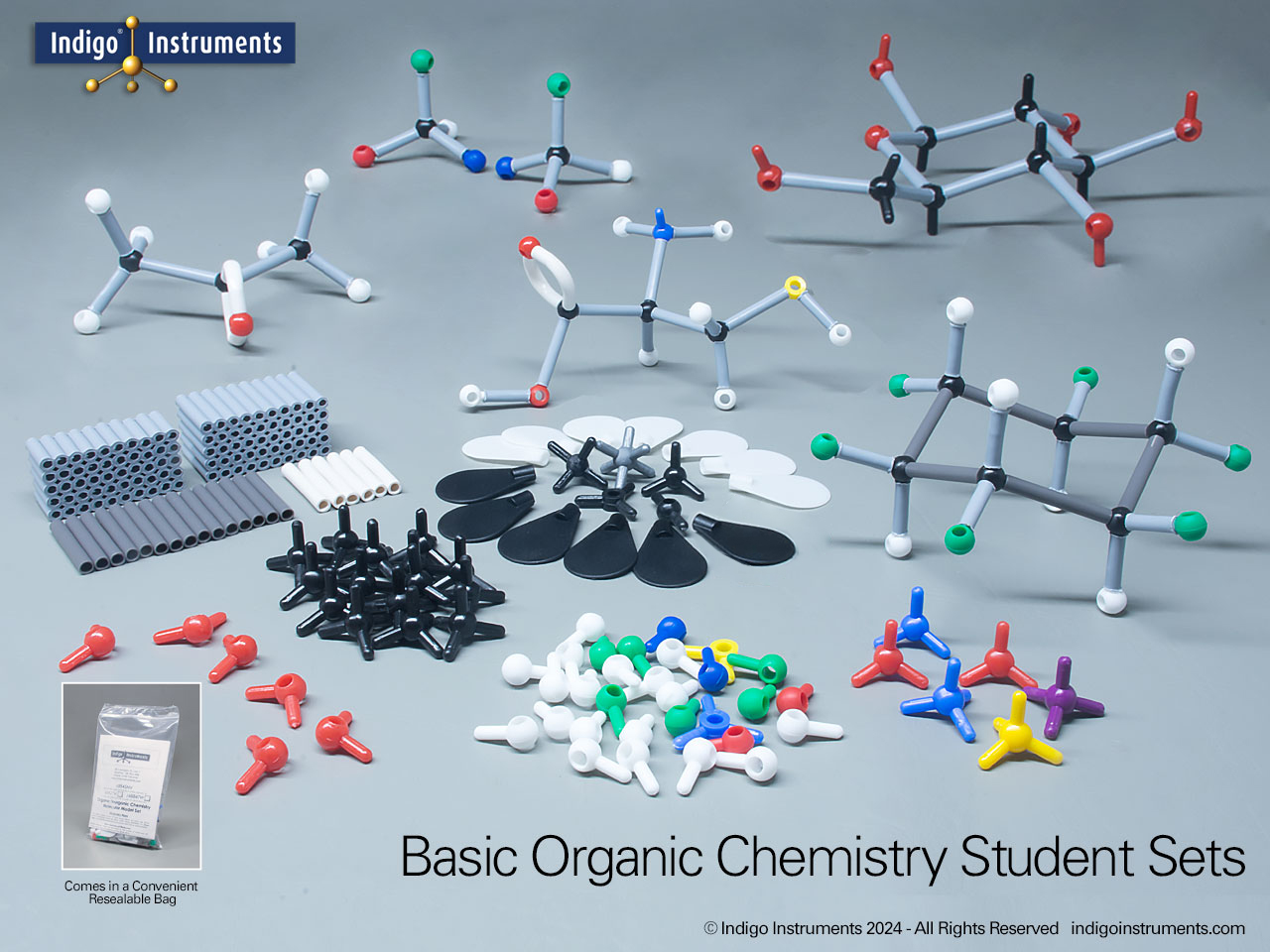
This basic molecular model set is ideal for biology, premed & nursing but has everything chemistry majors need too! Major functional groups you can build as well as amino, fatty, and nucleic acids or VSEPR theory structures for only $17.00 are listed below. This framework+discrete atoms style makes line drawings more intuitive especially when used with our 3D Molecular Model Builder.
- Standard colors: carbon (black); nitrogen (blue); oxygen (red); phosphorus (purple); etc.
- Discrete atoms (62) with elements easy to spot & number for stereochemical hierarchy
- Framework (ball-stick) style: match Fischer projections in book to physical structures
- Major functional groups: learn IUPAC naming conventions for organic compounds
- 121 bonds in 3 lengths; can be cut to scale to match atom radii if required
This student organic chemistry set offers all the benefits of our popular Molymod student Set but for a lot less $$. All the main VSEPR shapes from linear to octahedral can be demonstrated with the lone electron pair paddles that are included.
Indigo Instruments has held inventory of genuine Cochranes of Oxford (Orbit) atoms & bonds for 30+ years. These parts are compatible with every molecular model set we have sold since day 1. This quality may appear expensive but no parts support from other vendors costs even more.
